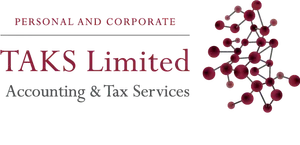The VAT Flat Rate Scheme is a simplified method of accounting for Value Added Tax (VAT) designed to make it easier for small businesses to calculate and pay their VAT liability. Instead of calculating the actual amount of VAT due on sales and purchases, businesses registered for the scheme apply a fixed flat rate percentage to their gross turnover to determine the VAT liability.
The percentage used depends on the type of business, and typically ranges from 4% to 16.5%. The flat rate percentage includes VAT, so businesses registered for the scheme cannot reclaim VAT on purchases, except for certain capital assets over £2,000.
The scheme is open to businesses with an annual turnover of up to £150,000, excluding VAT. Businesses can join the scheme voluntarily, but must leave if their annual turnover, including VAT, exceeds £230,000.
One of the main advantages of the VAT Flat Rate Scheme is that it simplifies VAT accounting for small businesses, as they don’t have to record the VAT on every purchase and sale. However, it may not be beneficial for all businesses, as they may end up paying more VAT than they would under the standard VAT scheme, especially if they purchase a lot of goods or services with VAT included.
You cannot join the Flat Rate Scheme if:
v you have previously been registered and only came out of the scheme in the last 12 months;
v you are, or were, within the previous 24 months, registered for VAT as the division of a larger business, or as part of a group, or you were eligible to do so;
- you use one of the margin schemes for second-hand goods, art, antiques and collectibles, the Tour Operators’ Margin Scheme, or the Capital Goods Scheme;
- you have been convicted of a VAT offence or charged a penalty for VAT evasion in the last year; or
- your business is closely ‘associated’ with another business
Limited cost trader test
An additional test for the Flat Rate Scheme was introduced in April 2017 that determines the VAT flat rate percentage used by certain VAT registered businesses that use the scheme. It appears that HMRC consider the benefits obtained by certain businesses to be excessive.
Traders that meet the definition of a ‘limited cost trader’ are required to use a fixed rate of 16.5%. This includes some traders who are already using the Flat Rate scheme with many at rates lower than 16.5%.
A limited cost trader is defined as one whose VAT inclusive expenditure on goods is either:
- less than 2% of their VAT inclusive turnover in a prescribed accounting period;
- greater than 2% of their VAT inclusive turnover but less than £1,000 per annum if the prescribed accounting period is one year (if it is not one year, the figure is the relevant proportion of £1,000).
For some businesses – for example, those who purchase no goods, or who make significant purchases of goods – the outcome of the test will be self-evident.
Any business that will be adversely affected by the changes should consider whether it will be more beneficial to leave the scheme. In fact, under some circumstances a limited cost trader ends up paying more VAT than on standard accounting.
Before joining the scheme, businesses should carefully consider whether it is right for them and seek advice from a professional accountant or tax adviser.find Bristol Local account and Tax consultant near me Local Accountants Bristol Accountants Patchway Accountants Filton Accountants in Clifton BS8, Accountants in Bristol Accountants in Yate Accountants Local expert advisors Accountants in Bedminster BS3 , Accountants in Brislington BS4 , Accountants in Bristol South BS14, Accountants in Horfield BS7 Accountants Bradley Stoke Accountants close to me, the tax expert near me in my area, close to me
